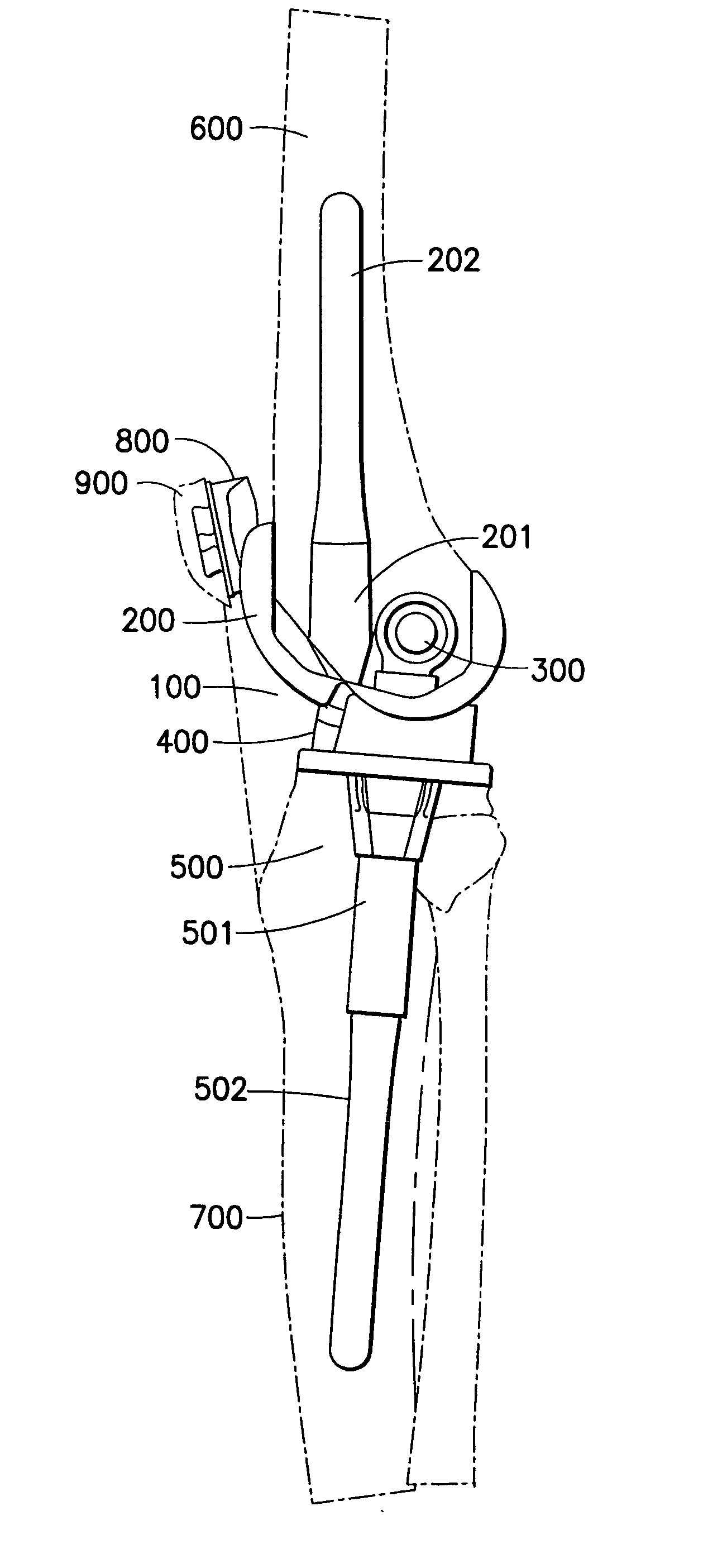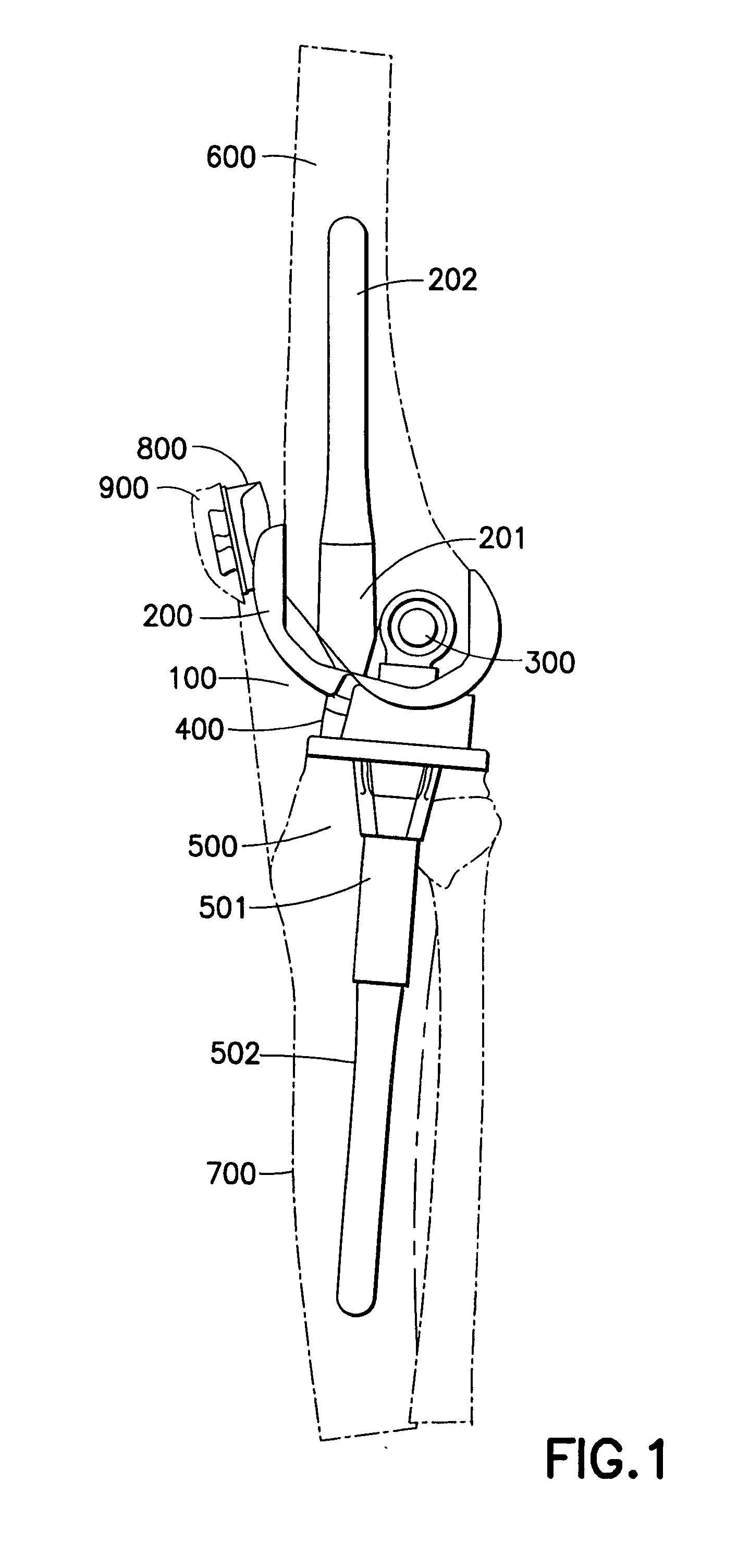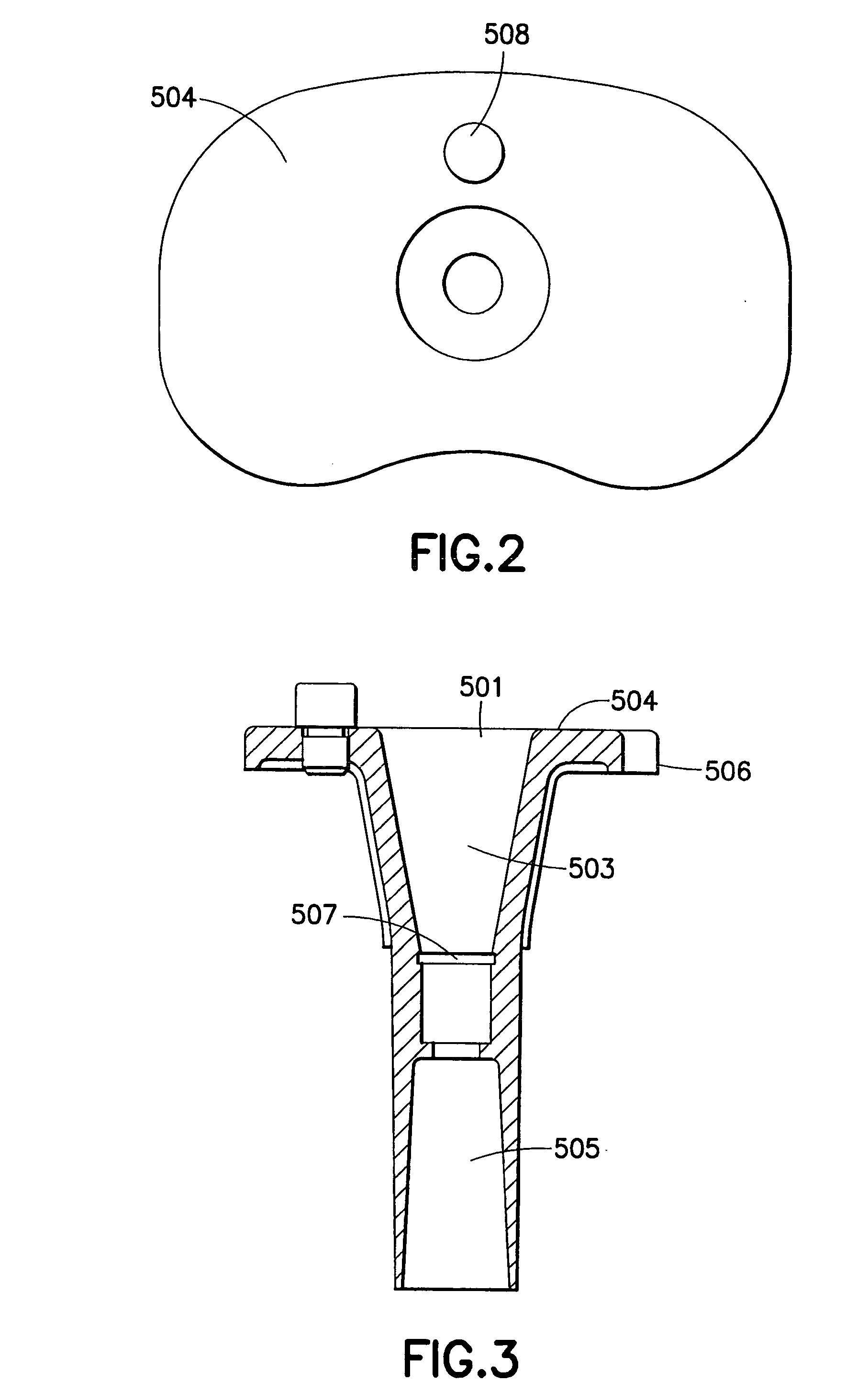Prosthetic knee
a knee joint and prosthesis technology, applied in the field of knee joint prosthesis, can solve the problem that the design cannot accommodate valgus-varus motion, and achieve the effect of providing stability
- Summary
- Abstract
- Description
- Claims
- Application Information
AI Technical Summary
Benefits of technology
Problems solved by technology
Method used
Image
Examples
Embodiment Construction
[0044] A hinged knee prosthesis in accordance with the invention is identified generally by the numeral 100 in FIGS. 1 and 19-23. The knee prosthesis 100 includes a femoral component identified generally by the numeral 200 in FIG. 1. The femoral component 200 is configured for mounting to the resected distal end of the natural femur 600. The femoral component 200 is configured for articulation relative to an assembly that includes a hinge subassembly 300, a plastic bearing 400 and a tibial component 500. The tibial component 500 is configured for mounting in the resected proximal end of the natural tibia 700. The prosthesis 100 may further include a patellar component 800 that may be implanted in the natural patella 900.
[0045] The tibial component 500 includes a body 501 and a stabilizing rod 502 as shown in FIG. 1. Both the body 501 and the stabilizing rod 502 are formed from a metallic material that will provide appropriate strength and biocompatibility. A preferred tibial compon...
PUM
| Property | Measurement | Unit |
|---|---|---|
| rotation | aaaaa | aaaaa |
| flexion angles | aaaaa | aaaaa |
| rotational movement | aaaaa | aaaaa |
Abstract
Description
Claims
Application Information
 Login to View More
Login to View More - R&D
- Intellectual Property
- Life Sciences
- Materials
- Tech Scout
- Unparalleled Data Quality
- Higher Quality Content
- 60% Fewer Hallucinations
Browse by: Latest US Patents, China's latest patents, Technical Efficacy Thesaurus, Application Domain, Technology Topic, Popular Technical Reports.
© 2025 PatSnap. All rights reserved.Legal|Privacy policy|Modern Slavery Act Transparency Statement|Sitemap|About US| Contact US: help@patsnap.com



